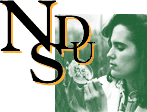 |
|
Ectenus Dallas, 1851
(updated 20 April 2005)
Ectenus Dallas, 1851: 151, 173-174.
Type Species: Cimex spectabilis Burmeister, 1834 (= Ectenus servulus Kirkaldy, 1909), by monotypy.
Tribal Placement: This genus has always been considered a member of the Halyini.
Included Species:
|
aereus
Stål
[image] brevirostris Stål generosus Stål [image] mesoleucus Bergroth pudicus Stål [image] servulus Kirkaldy spinosus Uichanco |
Comments: Ectenus was revised by Uichanco (1949).
Key to Species of Ectenus (modified from Uichanco, 1949)
|
1 Bucculae not prominantly produced anteroventrad, anteriorly forming a right or subacute angle; postfrenal part of scutellum broad, more or less broadly rounded apically, almost entirely stramineous, sublaevigate, sparsely punctured; basal angles of scutellum, each with a stramineous, sublaevigate spot, which is as large as apical spot or smaller; robust species, width of body about one-half length |
2 |
|
- Bucculae prominently produced anteroventrad into an acute or subacute process; postfrenal part of scutellum narrow, roundly subacute at apex; stramineous, laevigate spot only thinly bordering apical and lateral areas; stramineous, laevigate spot at each basal angle of the scutellum obsolete; more slender species, width of body slightly or considerably less than on-half length |
5 |
|
2(1) Head subequal in length to pronotum; first antennal segment not extending beyond apex of head; laevigate spot on postfrenal projection of scutellum generally impunctate; laevigate spots at basal angles of scutellum usually as large as apical spot; an obsolescent sulcus barely extending to caudal margin of third abdominal sternite [image of syntype] |
generosus Stål |
|
- Head markedly shorter than pronotum; first antennal segment extending by about one-third its length beyond apex of head; laevigate spot on postfrenal part of scutellum conspicuously punctured; laevigate spots at basal angles of scutellum much smaller than apical spot; a well-defined median sulcus extending to apex of fourth or to about middle of fifth abdominal sternite |
3 |
|
3(2) Lateral angles of terminal abdominal segments only moderately dentate, those of sixth armed with a short spine; external genitalia of female broadly rounded at apices; lateral halves of propleura very deeply and thickly punctate |
mesoleucus Bergroth |
|
- Lateral angles of terminal abdominal segments very prominently dentate and armed with rather long spines; external genitalia of female acute; propleura very sparsely and shallowly punctate, except for a small irregular patch near lateral margin |
4 |
|
4(3) Second antennal segment slightly shorter than basal [image of syntype] |
pudicus Stål |
|
- Second antennal segment about one-half longer than basal |
spinosus Uichanco |
|
|
|
|
5(1) Anterior angle of pronotum with a conspicuous ectally directed denticle; humeral angle more prominent, subacute; anterior area of pronotum broadly subconfluent with posterior; second antennal segment somewhat longer than third |
6 |
|
- Anterior angle of pronotum without prominent denticle; humeral angle of pronotum less salient, somewhat rounded; anterior area of pronotum more strongly gibbous, between lateral one-fourth distinctly delimited from posterior by a transverse uniserially punctate impression; second and third antennal segments usually subequal in length |
servulus Kirkaldy |
|
|
|
|
6(5) Rostrum extending to about middle of fifth abdominal sternite; median sulcus extending to base of, or midway into, fifth abdominal sterniate [image of syntype] |
aereus Stål |
|
- Rostrum extending to, or only a little beyond, caudal margin of third abdominal sternite; median ventral sulcus on abdomen shorter or posteriorly more obsolescent [image of syntype] |
brevirostris Stål |
| Researchers | Genus Index | Systematics | Host Information |
| Bibliography | Species Index | Biographies & Type Info | Natural Enemies |
| Catalogs | Identifications | Collection Lists | Other resources |
David A. Rider
Professor of Entomology
North Dakota State University
202 Hultz Hall
Fargo, ND 58105
E-Mail: David.Rider@ndsu.edu
Published by the Department of
Entomology
Prospective students may schedule a visit by calling 1-800-488-NDSU.